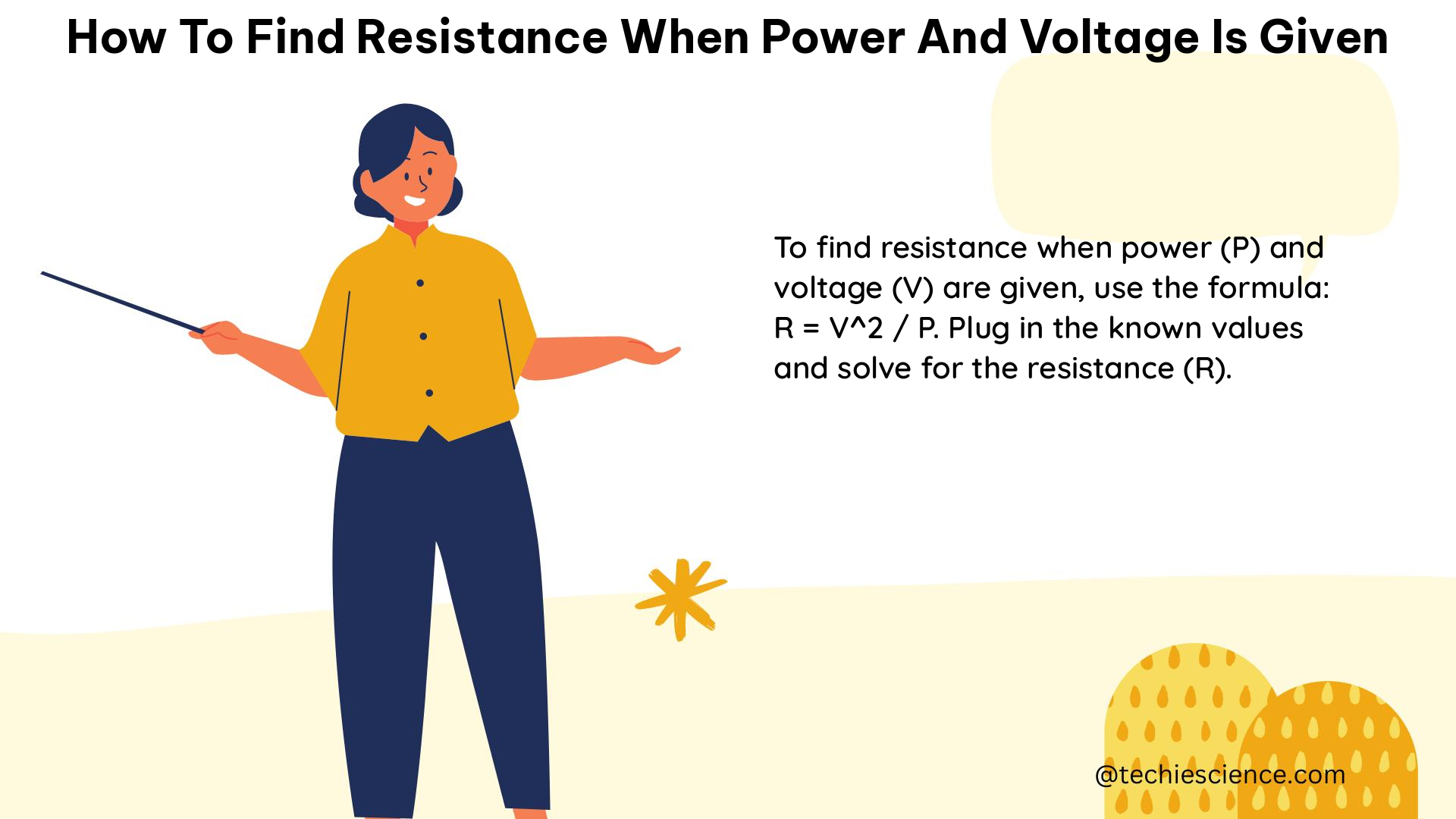When dealing with electrical circuits, understanding the relationship between power, voltage, and resistance is crucial. This comprehensive guide will walk you through the step-by-step process of finding the resistance when the power and voltage are given, providing you with a deep understanding of the underlying principles and practical applications.
Understanding the Fundamentals
To find the resistance when power and voltage are given, we need to utilize the fundamental equations of electrical circuits, specifically Ohm’s law and the power equation.
Ohm’s law states that the current (I) in a circuit is directly proportional to the voltage (V) and inversely proportional to the resistance (R). This relationship can be expressed as:
V = I × R
The power (P) in an electrical circuit is the rate at which energy is transferred or consumed. The power equation is given by:
P = V × I
By combining these two equations, we can derive the formula to find the resistance when power and voltage are given:
P = V × I
R = V² / P
Step-by-Step Approach

To find the resistance when power and voltage are given, follow these steps:
-
Identify the Given Values: Gather the known information, which includes the power (P) and the voltage (V).
-
Calculate the Current (I): Using the power equation, P = V × I, we can rearrange the formula to solve for the current:
I = P / V
- Calculate the Resistance (R): Now that we have the current (I), we can substitute it into the formula for resistance:
R = V² / P
Alternatively, you can also use the formula:
R = P / I²
Let’s go through an example to solidify the understanding.
Example Calculation
Given:
– Power (P) = 100 watts
– Voltage (V) = 10 volts
Step 1: Calculate the current (I)
I = P / V
I = 100 watts / 10 volts
I = 10 amps
Step 2: Calculate the resistance (R)
R = V² / P
R = (10 volts)² / 100 watts
R = 100 volts² / 100 watts
R = 1 ohm
Therefore, the resistance in this circuit is 1 ohm.
Advanced Considerations
-
Parallel and Series Circuits: When dealing with more complex circuits, such as those with parallel or series configurations, the process of finding the resistance may involve additional steps and calculations. Understanding the principles of series and parallel circuits is essential in these cases.
-
Power Dissipation and Efficiency: In addition to finding the resistance, it is often important to consider the power dissipation and efficiency of the circuit. This can be calculated using the power equation and the resistance value.
-
Practical Applications: The ability to find the resistance when power and voltage are given is crucial in various electrical and electronic applications, such as power supply design, motor control, and energy management systems.
-
Measurement Techniques: In real-world scenarios, the power and voltage values may need to be measured using appropriate instruments, such as multimeters or power analyzers. Understanding the limitations and accuracy of these measurement techniques is important for reliable calculations.
-
Safety Considerations: Electrical circuits can be hazardous, and it is essential to follow proper safety protocols when working with power and voltage. Incorrect calculations or improper handling of electrical components can lead to serious consequences, such as fire, electric shock, or even death.
Conclusion
In this comprehensive guide, we have explored the step-by-step process of finding the resistance when power and voltage are given. By understanding the fundamental equations, applying the correct formulas, and considering advanced concepts, you can confidently tackle a wide range of electrical circuit problems. Remember to always prioritize safety and double-check your calculations before applying them to real-world applications.
Reference:

The lambdageeks.com Core SME Team is a group of experienced subject matter experts from diverse scientific and technical fields including Physics, Chemistry, Technology,Electronics & Electrical Engineering, Automotive, Mechanical Engineering. Our team collaborates to create high-quality, well-researched articles on a wide range of science and technology topics for the lambdageeks.com website.
All Our Senior SME are having more than 7 Years of experience in the respective fields . They are either Working Industry Professionals or assocaited With different Universities. Refer Our Authors Page to get to know About our Core SMEs.